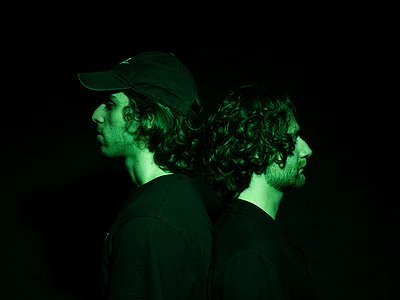Name: FOVOS
Members: Eros Dorian, Mario Sinovcic
Nationality: New Zealand
Occupation: Producers, performers
Current release: FOVOS' "Flashing Lights" is out via Hardwell’s Revealed. Also available is "Let You know", a collaboration with HIJCKD on Sandbox.
Gear Recommendations: Ozone 8 (for mastering); Camel Crusher
If you enjoyed this interview with FOVOS and would like to stay up to date with their music, visit their official website. The duo is also on Instagram, and Soundcloud.
What was your first studio like?
For us, like most producers, we started making music at home in our bedrooms on our laptops. Then, after a year or so we invested in some KRKs and headphones to help with sound design and mixdowns.
Some of the ideas from our bedroom days have been reworked and released like our track “Feel The Rhythm.”
How and for what reasons has your set-up evolved over the years and what are currently some of the most important pieces of gear for you?
Since we’re EDM producers our setup hasn’t changed much in terms of hardware. However, over the years we’ve experiment with heaps of different software.
Some of our favourites include the iZotope suite of plugins, SoundToys Decapitator, and Freeclip.
Some see instruments and equipment as far less important than actual creativity, others feel they go hand in hand. What's your take on that?
It’s hard to make good music without good equipment. But we also know first-hand that restrictions breed creativity.
For example, we like to use a lot of distortion and without certain plugins we wouldn’t have been able to make tracks like “Hypnos” or “Psychopath.”
I guess both sides of the argument make sense.
A studio can be as minimal as a laptop with headphones and as expansive as a multi-room recording facility. Which studio situation do you personally prefer - and why?
We prefer speakers and a well-treated room for creating new tracks but then we like to swap to the headphones and laptop for mixing and mastering.
From traditional keyboards to microtonal ones, from re-configured instruments (like drums or guitars) to customised devices, what are your preferred controllers and interfaces? What role does the tactile element play in your production process?
Typically, we use a keyboard attachment to test our melodies while working on new tracks. It’s a simple set up, but it allows us to swap out sounds on the fly on our computers.
In the light of picking your tools, how would you describe your views on topics like originality and innovation versus perfection and timelessness in music? Are you interested in a “music of the future” or “continuing a tradition”?
Both are critical. Most of the music we love has a combination of new and old.
For example, we love old-school techno and house music from the 90s rave era. So, we try to take those sounds and themes and translate them into something that will work well in the modern era.
Our track "Trigger Finger" is a good example of this since it uses rave stabs and a strong Gabber sample.
Most would regard recording tools like microphones and mixing desks as different in kind from instruments like keyboards, guitars, drums and samplers. Where do you stand on this?
That’s fair since they’re more technical and usually serve a specific purpose. However, you can still express yourself through these tools and tailor to your sound.
A great quality microphone makes sense for a vocal driven pop hit. But a cheap tinny mic is useful for achieving a more grungy and crunchy sound.
How would you describe the relationship between technology and creativity for your work? Using a recent piece as an example, how do you work with your production tools to achieve specific artistic results?
Tech and creativity are quite connected in what we do. We had to spend years just learning the tools to be comfortable enough to be creative.
And to be honest, we’re still looking for new tools and tech to explore and be creative with.
Within a digital working environment, it is possible to compile huge archives of ideas for later use. Tell me a bit about your strategies of building such an archive and how you put these ideas and sketches to use.
We are terrible at this! I don’t think we should give any advice here because we’re still trying to figure it out ourselves to be completely honest.
How do you retain an element of surprise for your own work – are there technologies which are particularly useful in this regard?
A pretty simple way that we add variation to our work is by recording it and chopping it up.
In our remix for Dillion Francis and Vinne’s track “Once Again” we chopped up their samples and ours to create variation and ear candy in the final mix.
Production tools can already suggest compositional ideas on their own. How much of your music is based on concepts and ideas you had before entering the studio, how much of it is triggered by equipment, software and apps?
In our case, very little is triggered by the equipment. Instead, we typically use the equipment to express the ideas we have and build out a track from there.
Have there been technologies which have profoundly changed or even questioned the way you make music?
Not really, we mainly get inspiration from the music itself.
What tools/instruments do you feel could have a deeper impact on creativity but need to still be invented or developed?
Analogue synthesis emulation is still not there yet. The sound that you get out of a real analogue synth is always heavier, fuller, and still can’t compete with most software synths.




